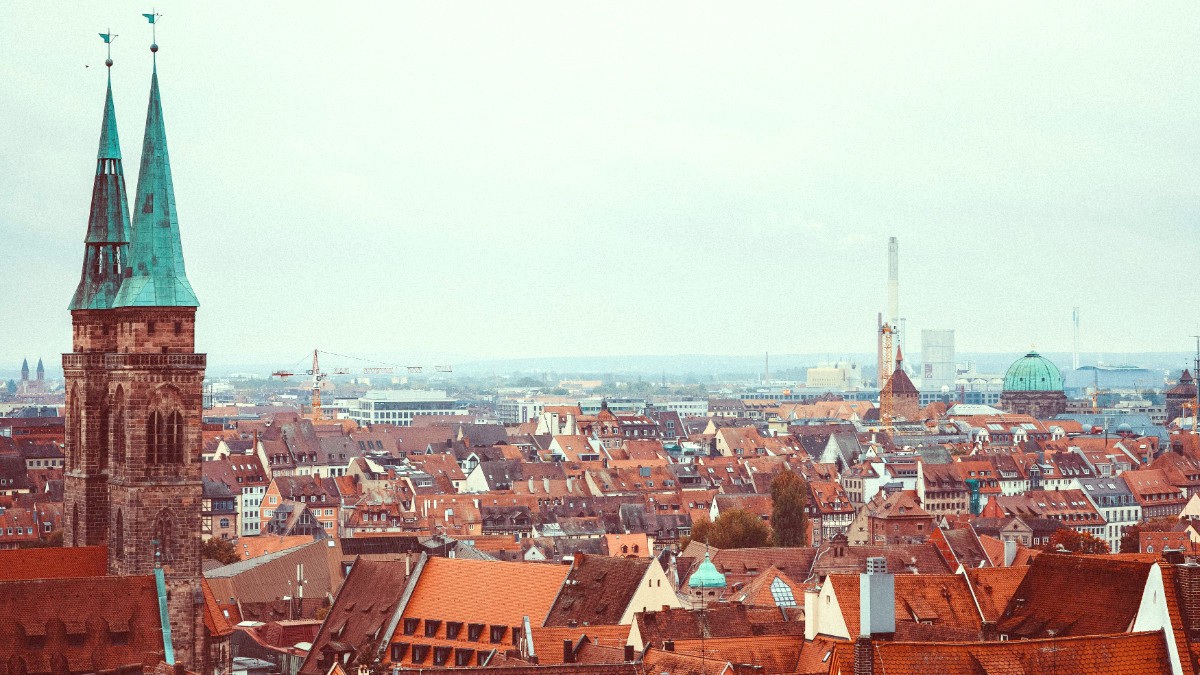
Bavaria, Germany
While part of the broader Franconian cuisine, Nuremberg has developed its own unique specialties. The "Nürnberger Rostbratwurst" (small grilled sausages) are protected by EU law, making sure their specific size and composition. "Elisenlebkuchen" (gingerbread) is another distinct Nuremberg product, known for its high nut content and lack of flour. These specialties are celebrated city-wide.
Franconian cooking features meats, especially pork and various sausages, along with potatoes, cabbage, and dense breads. Locally brewed beer always accompanies meals. Nuremberg itself boasts specialties that have been refined over centuries.
These include its small grilled sausages and the renowned gingerbread. The cuisine shows a practical, comforting style, made to sustain a busy populace.
Pork and Beef are central to many dishes. Potatoes are served in various forms, including dumplings (Knödel) or roasted. Cabbage (Sauerkraut and red cabbage) are common side dishes. Onions and Horseradish have pungent and sharp flavors.
Caraway and Marjoram are common spices, notably for sausages and roasted meats. Gingerbread spices: Cinnamon, cloves, ginger, and other warm spices define Lebkuchen.
Flavors are generally savory, rich, and comforting, often with a balance of tang from fermented cabbage or mustard.
Nuremberg's most famous specialty. These are small, finger-sized grilled pork sausages, typically 7-9cm long and weighing a maximum of 25g each.
Order "Drei im Weckla" (three in a bun) with mustard, or "Sechs/Acht/Zwölf auf Kraut" on a pewter plate, often with horseradish. Find at street vendors throughout the Old Town.
Roasted pork shoulder, a hearty Franconian dish. It typically features a crispy crackling crust, served with potato dumplings (Knödel) and a rich, dark beer sauce.
Find in traditional Franconian restaurants, like Bratwursthäusle or Albrecht Dürer Stube.
Especially the "Elisenlebkuchen," a soft, often nut-heavy gingerbread, usually with no flour and covered in chocolate or sugar glaze.
While a Christmas specialty, find year-round in shops like Lebkuchen Schmidt and Wicklein. Excellent souvenirs.
A large, soft pretzel, often served with butter (Butterbrezel). A common snack at bakeries or beer gardens.
A large, fluffy steamed yeast dumpling. It typically has a plum jam filling and is topped with poppy seeds and melted butter or vanilla sauce. A comforting dessert or light meal.
Essigbrätlein: This Michelin-starred restaurant offers modern, innovative cuisine with a strong focus on local ingredients. Reservations are required, and there is often a long waiting list, so book well in advance.
Bratwursthäusle bei St. Sebald: A historic and popular restaurant for traditional Nuremberg Rostbratwurst in a classic setting.
Street vendors throughout the Old Town sell Nuremberg Bratwurst ("Drei im Weckla"). These have a quick and inexpensive meal.
This square hosts a daily fresh produce market (except Sundays). You can find some food stalls selling snacks and light meals.
Open daily (except Sunday). Visit early for best selection.
During Advent (late November to December 24th), Hauptmarkt transforms into a massive food and craft market. It has a wide array of seasonal treats, Glühwein, and Bratwurst.
A world-famous event, plan your visit for the full experience.
Many options for pasta, pizza, and Mediterranean dishes.
Chinese, Japanese, Thai, Vietnamese restaurants are available.
Turkish options are common, plus other diverse international choices.
Especially prevalent outside the immediate Old Town, presenting diverse dining choices.
Use apps like HappyCow for finding vegetarian and vegan-friendly restaurants.
Check for local reviews on these platforms.
If you have severe allergies, carry a dietary translation card in German. This clearly states your restrictions to restaurant staff.
These cards are very useful for communicating specific needs.
Supermarkets (Rewe, Edeka, Aldi, Lidl) have good selections of gluten-free, vegan, and other specialized products. This makes self-catering a good option for strict diets.
Staying in a vacation rental or apartment with kitchen facilities gives greater control over your meals and dietary intake.
These are notably popular around Christmas, but some shops or cooking schools might offer them year-round. This makes it possible to learn about a distinct Nuremberg culinary tradition.
While less common directly in Nuremberg, some breweries in the wider Franconia region offer workshops. You can learn about the traditional German brewing process.
In the wider Franconian countryside, you can find local breweries, wineries, and farm shops (Hofläden). These have fresh, regional produce and a chance to learn about local food production.
Eating "Drei im Weckla" from a street vendor is a quintessential Nuremberg experience. It has a quick, authentic taste of the city.
Look for vendors in the Old Town, especially around Hauptmarkt.
Dining in one of the historic "Bratwurstküchen" (sausage kitchens) like Zum Gulden Stern delivers an unique step back in time.
These establishments have served Nuremberg sausages for centuries.
Visit Hauptmarkt for fresh produce and local snacks. During Advent, the Christkindlesmarkt is a must-visit for festive treats.
Beyond beer, try Franconian wine from the unique Bocksbeutel bottle, especially white varieties like Silvaner.
Buy Lebkuchen directly from a Nuremberg bakery. It is an authentic and delicious souvenir, not just for Christmas.
Germans often say "Guten Appetit" (good appetite) before eating. You can reciprocate this phrase.